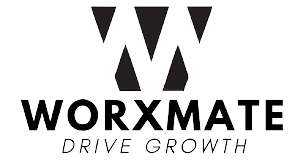We are witnessing a paradigm shift. The most valuable resource of the 21st century isn’t oil, data, or even technology – it’s talent. As we stand on the brink of the 4th Industrial Revolution, with automation and AI reshaping industries, the ability to attract, develop, and retain top-tier human talent has become the ultimate competitive advantage.
Yet, amidst this talent revolution, a startling reality persists. According to a recent Gartner study, a staggering 81% of HR leaders are making changes to their performance management systems, acknowledging that traditional approaches are no longer fit for purpose in today’s dynamic business environment. The message is clear: evolve or be left behind.
As a CHRO, CEO, or founder, you are the architect of your organization’s future. The performance management software you choose today will shape the culture, productivity, and success of your company for years to come. It’s not just about annual reviews or setting KPIs – it’s about creating an ecosystem where talent thrives, innovation flourishes, and business goals are not just met, but consistently exceeded.
In this guide, we’ll cover the essential factors you need to consider when selecting the best performance management software for your business, and how the right solution can drive employee engagement and organizational success.
Why Choosing the Right Performance Management Software is Critical?
A strong performance management system (PMS) is vital to improving productivity, reducing employee turnover, and enhancing overall engagement. A software solution enables companies to manage performance more effectively, providing real-time insights and feedback while streamlining HR processes. According to a survey by Mckinsey, companies with effective performance management strategies excel 3 times more than those with ineffective systems.
However, selecting the right tool requires careful consideration of several key factors, which we will explore below.
Key Factors to Consider When Choosing Employee Performance Management Software

1. Ease of Use and Accessibility
No matter how powerful a tool is, if it’s hard to use, employees and managers won’t engage with it. The software should have an intuitive and easy-to-navigate interface that encourages participation across all levels of the organization. Look for platforms that offer mobile accessibility, allowing employees and managers to provide feedback, track goals, and review performance on the go.
Why it matters: A user-friendly system ensures higher adoption rates, and a seamless experience can drive consistent usage across the team.
2. Goal Setting and Alignment Features
One of the primary functions of performance management software is to facilitate goal setting. The software should allow employees to set, track, and update their goals in real-time, ensuring alignment with the broader organizational objectives. Look for platforms that support frameworks like OKRs (Objectives and Key Results) or SMART goals, helping employees understand how their work contributes to the company’s overall mission.
Why it matters: Proper goal setting encourages accountability and provides a clear direction for individual contributions. When employees see how their work ties into company success, it boosts motivation and engagement.
3. Continuous Feedback and Real-time Performance Tracking
Gone are the days of annual reviews. Modern performance management relies on continuous feedback to help employees stay on track and improve. The right software should support real-time feedback, whether it’s through 360-degree reviews, peer evaluations, or manager check-ins. It should also provide real-time performance tracking with visual dashboards, enabling managers to monitor progress and make data-driven decisions.
Why it matters: Continuous feedback keeps employees aligned with their goals, prevents issues from escalating, and fosters a culture of open communication.
4. Customizable Performance Reviews
Every organization has its own performance metrics, and a one-size-fits-all approach won’t cut it. Look for performance management software that allows for customized performance review templates. The software should be flexible enough to adapt to your organization’s specific KPIs, roles, and departments, ensuring that reviews are relevant and personalized.
Why it matters: Customizable performance reviews lead to more meaningful evaluations, helping managers and employees focus on areas that are most critical to their roles and responsibilities.
5. Integration with Existing Tools
To make the most of your performance management software, it’s important that it integrates seamlessly with the other systems your organization is already using—whether that’s your HRIS (Human Resource Information System), payroll software, or communication tools like Slack or Microsoft Teams.
Why it matters: Smooth integration allows for efficient data flow, reducing duplication of effort and creating a more cohesive workflow. This not only saves time but ensures better data accuracy.
6. Reporting and Analytics
Data-driven insights are crucial for improving performance management. The software you choose should offer comprehensive reporting features, providing managers with the data they need to make informed decisions. Look for software that generates detailed performance reports, tracks key metrics, and identifies trends to help you optimize performance processes.
Why it matters: Strong analytics capabilities help you spot potential performance issues early and enable you to refine your strategies, leading to a more effective workforce.
7. Data Security and Compliance
Since performance management software handles sensitive employee data, ensuring that the platform offers robust security features is crucial. It should comply with data protection regulations such as GDPR or CCPA and provide encryption to safeguard personal information. Ask the vendor about their security certifications and data handling practices before making a decision.
Why it matters: Protecting sensitive employee data is non-negotiable. Data breaches can lead to legal repercussions and damage your company’s reputation.
8. Performance Improvement Planning
A comprehensive performance management software should not only track employee performance but also provide mechanisms to address underperformance. Performance Improvement Plans (PIP) are vital in helping employees get back on track when they’re not meeting expectations. The software should enable managers to create, implement, and monitor PIPs easily, with clear milestones and timelines. By offering structured support, it ensures employees have the opportunity to improve before more drastic steps like reassignment or termination are considered.
Why it matters: Without a formal process to manage performance issues, struggling employees may feel unsupported, leading to disengagement or turnover. PIPs, integrated within the performance management system, create a path to improvement, fostering a culture of development and support.
9. Succession Planning and Talent Development
Organizations that think ahead about their leadership pipeline are better equipped for long-term success. A strong performance management system should incorporate tools for succession planning, helping identify high-potential employees and preparing them for future leadership roles. It should also offer talent development features that enable employees to build the skills necessary for advancement through personalized learning plans and developmental milestones.
Why it matters: Succession planning ensures business continuity by reducing the risks associated with key talent leaving the company. By grooming internal talent for future roles, organizations can save on recruitment costs and ensure a smoother leadership transition.
10. Support for Remote and Hybrid Teams
With the rise of remote and hybrid work environments, it’s essential for performance management software to be designed with flexibility in mind. The right system should accommodate employees who work outside the office by enabling virtual check-ins, remote goal tracking, and cloud-based access to performance data. Features such as asynchronous feedback and digital collaboration tools ensure that remote teams stay aligned and engaged, no matter where they are.
Why it matters: As remote and hybrid work becomes the norm, companies need tools that ensure every team member—whether in the office or working remotely—receives consistent feedback and support. Performance management systems that support remote teams help bridge communication gaps, fostering a sense of inclusion and accountability regardless of location.
Conclusion: Making the Right Choice
Selecting the right performance management software is a decision that can greatly impact the success and satisfaction of your employees. By focusing on the key factors—usability, continuous feedback, customization, integration, and security—you can ensure that your organization adopts a tool that promotes a culture of growth, engagement, and alignment.
If you’re looking for a solution that checks all these boxes, Worxmate.ai’s Performance Management System (PMS) offers a powerful, customizable, and user-friendly platform designed to meet the needs of modern businesses. With features like goal alignment, real-time feedback, and robust analytics, Worxmate.ai can help you transform the way you manage performance in your organization.
Book a call with us to elevate your performance management process.




